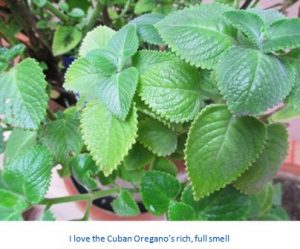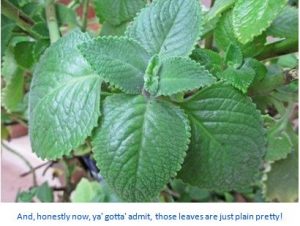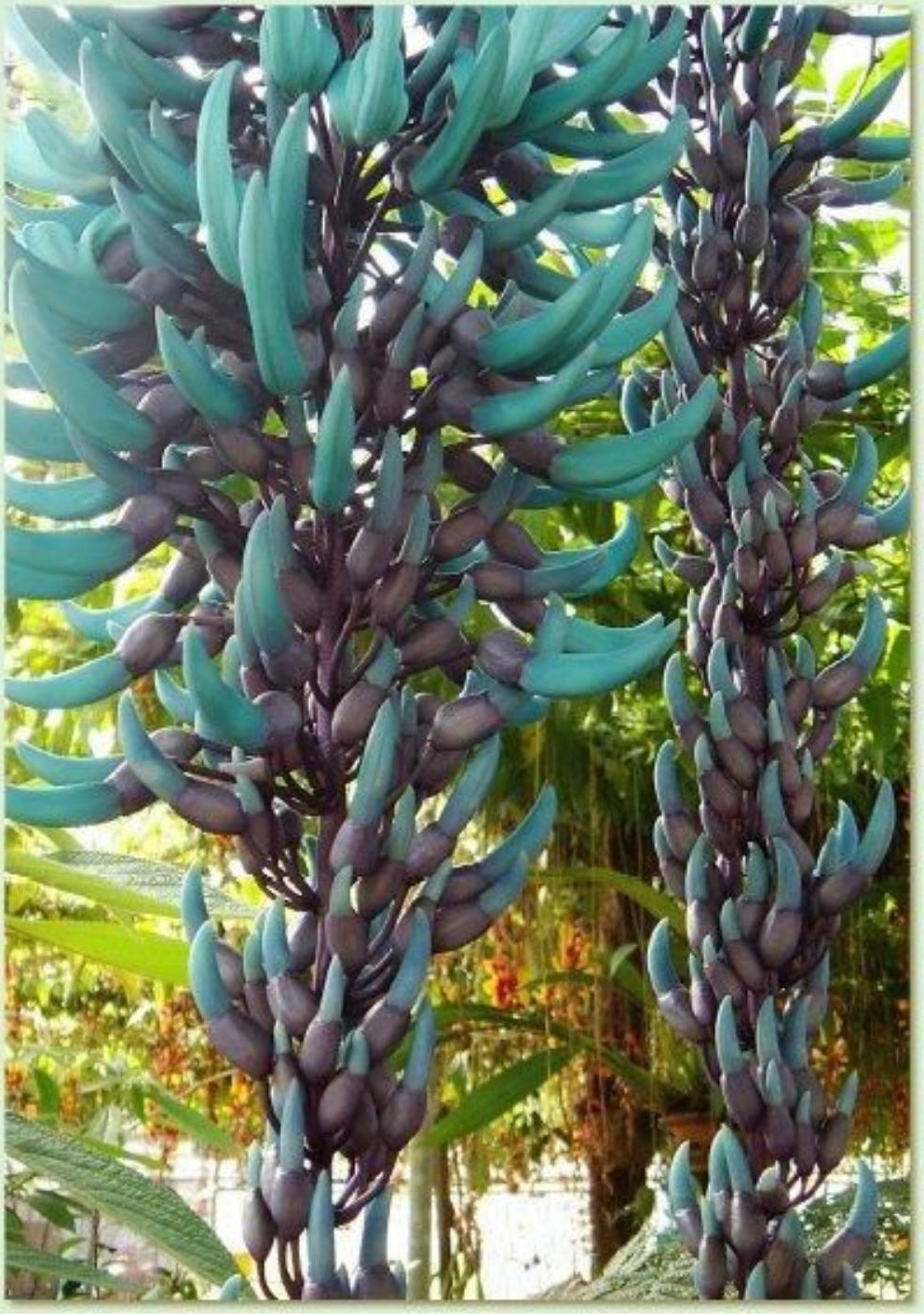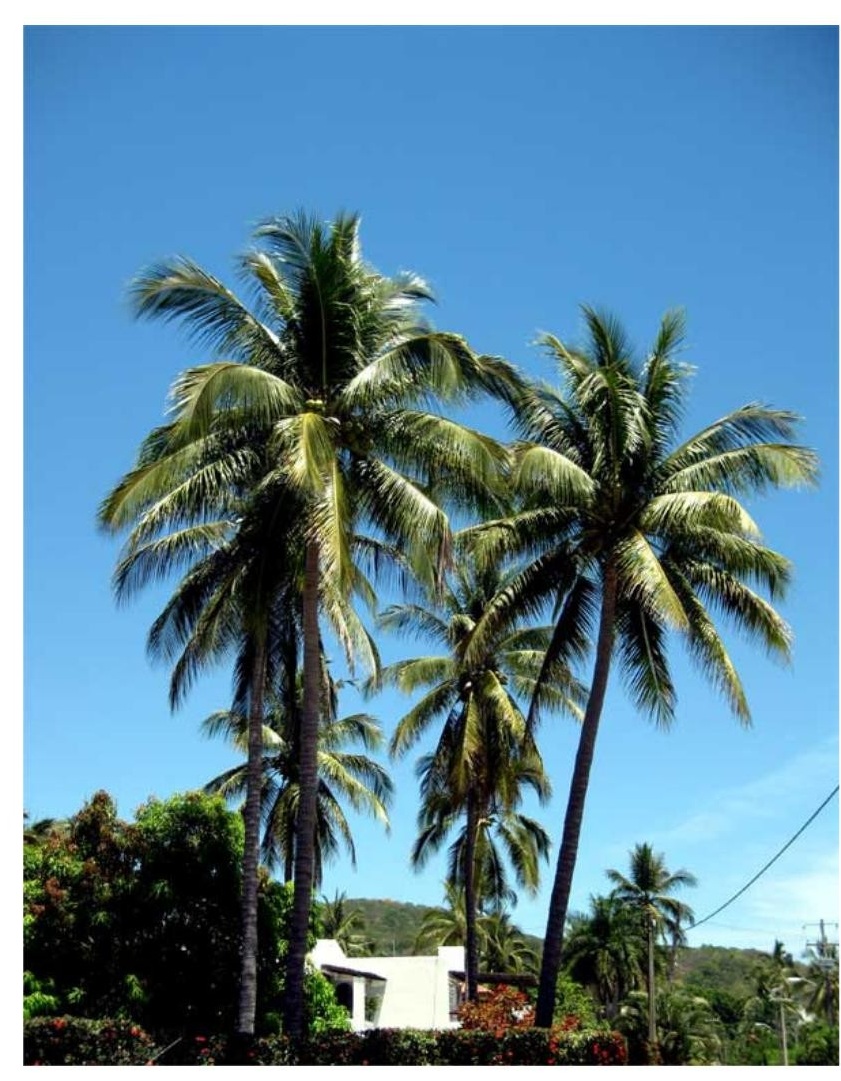By Tommy Clarkson from the May 2017 Edition
Cuban Oregano, Plectranthus amboinicus
Family: Lamiaceae
Also known as: Mexican Mint, Spanish Thyme, French Oregano and Indian Borage
Not native to Cuba, Cuban Oregano was probably introduced to the Caribbean folks via Haiti during the late 1800s French colonial period. Originating in India, the leaves of this mint family plant are used throughout Eastern Asia and the Carib- bean as culinary seasoning and, sometimes, even medicine!
This coleus-looking perennial has succulent, thick, light green, three inch (7.62 cm) leaves – sometimes with white, scalloped edges.
 Plectranthus amboinicus prefers sandy well-drained soil and, if happy, can in a sprawling manner easily reach a height of three feet (.91 meter) in height . . . while I’ve heard of no few specimens attaining heights as much as nearly six feet (1.83 meters).
Plectranthus amboinicus prefers sandy well-drained soil and, if happy, can in a sprawling manner easily reach a height of three feet (.91 meter) in height . . . while I’ve heard of no few specimens attaining heights as much as nearly six feet (1.83 meters).
To keep the foliage thick and dense, pinch the tips off periodically. Remember that it needs water regularly (but let it dry out between each watering). To attain its lushest growth potential, it prefers some shade. In full sun, it will be a ground hugger and tend to be stunted. Also, be aware that too much fertilizer will make the plant grow excessively and cause its leaves to lose their pungent flavor.
Some consider a down side to this plant its brittle stems that easily break off from the parent plant. While this is a fact, these detached pieces can be easily rooted to create new plants. (The norm for such is a stem with three or more sets of leaves.) Sim- ply pinch off the bottom two sets of leaves, sinking the stem into  damp soil up to the lowest remaining set of leaves and keep it well watered – but not waterlogged. Through this proce- dure, one should see new growth in a few weeks. However, I’ve had great results in simply putting the broken stems in a plastic container of water for about three weeks – in indirect light – and find the new roots that emerge then eager for soil re- planting!
damp soil up to the lowest remaining set of leaves and keep it well watered – but not waterlogged. Through this proce- dure, one should see new growth in a few weeks. However, I’ve had great results in simply putting the broken stems in a plastic container of water for about three weeks – in indirect light – and find the new roots that emerge then eager for soil re- planting!
Once mature, prune judiciously. Doing so will allow you to reap leaves regularly and still have an attractive plant. Important point: Make sure that you never harvest more than 2/3 of any plant at one time.
Not unattractive in themselves, these plants will occasionally produce pale violet flowers. Ours are displayed on the Stepped Terrace next to Rosemary and Tabasco Peppers not far from a large clump of Lemon Grass.
Cook with Oregano? Indeed! According to The Herbalist in the Kitchen: “The fresh leaves are used to season fish and cabrito (young goat) in the islands. They are sometimes chopped in chili pastes (something like Jerk Seasoning, but without the strong Onion and Ginger presence). The leaves are the primary
seasoning in the Cuban black bean soup, Frijoles Negros. A kind of salsa, made by mincing the leaves together with various unripe fruits, is served as an accompaniment to rice. In Java and Malaysia, it is used in curries — especially with goat or strong-smelling fish.”
In Northern America – as a substitute for sage – the leaves are often used in stuffing. But be careful. Too many leaves, with their very strong and long-lasting flavor, will produce a some- what turpentine flavor. Hence, you might wish to keep in mind that the younger leaves are milder.
Beyond use in poultry stuffing, other food with which it is commonly employed include: artichokes, duck, ham, lamb, leeks, potatoes, pork, pumpkin, sausages, and veal.
Some of Cuban Oregano’s classic partners in flavor are Garlic, Garlic Chives, Lemon Thyme, Marjoram, Rosemary, Savory and Shallots, In Cuba, practitioners of traditional herbal medicine make a tea from its leaves that help with digestive problems, respiratory ailments and arthritis. In Indonesia, its dried leaves are added to soup in order to increase the quantity of a nursing mother’s milk. And in India, it is mixed with sugar and then boiled down into a syrup that is used as a homeopathic remedy for coughs and sore throats.
Some rub the crushed, strongly scented, leaves on their skin as an insect repellent.
But I’ve saved the best for last! It neutralizes capsaicin that compound found in peppers making them so hot to one’s pal- ate – chewing on a Cuban oregano leaf will cool the burning sensation of spicy foods!
As part of our Ola Brisa Gardens tours, I pluck off a leaf and let visitors savor the Cuban Oregano’s rich, full smell.
And, honestly now, ya’ gotta’ admit, those leaves are just plain pretty!
Download the full edition or view it online
—
Tommy Clarkson is a bit of a renaissance man. He’s lived and worked in locales as disparate as the 1.2 square mile island of Kwajalein to war-torn Iraq, from aboard he and Patty’s boat berthed out of Sea Bright, NJ to Thailand, Germany, Hawaii and Viet Nam; He’s taught classes and courses on creative writing and mass communications from the elementary grades to graduate level; He’s spoken to a wide array of meetings, conferences and assemblages on topics as varied as Buddhism, strategic marketing and tropical plants; In the latter category he and Patty’s recently book, “The Civilized Jungle” – written for the lay gardener – has been heralded as “the best tropical plant book in the last ten years”; And, according to Trip Advisor, their spectacular tropical creation – Ola Brisa Gardens – is the “Number One Tour destination in Manzanillo”.




